Friday 8th March - Kleshas, Carrot Soup and Propagating Pothos Plants
This Week's Class Notes... The Kleshas
In my classes recently we've been taking a look at a classical yoga book called The Yoga Sutras of Patanjali. This text was written many hundreds of years ago (it's thought sometime before 400 CE) but it's still relevant and helpful today, both to help bring a philosophical element to modern-day yoga practice and to help guide us through the ups and downs of life itself.
This week we looked at the Kleshas, the five obstacles to living a peaceful life. Translated from Sanskrit, klesha means 'poison', and these obstacles poison our minds, hinder us and block our way to tranquility. They are also known as afflictions, hindrances and veils that cover up the truth and stop us from seeing life as it really is. Once we can start to notice these obstacles, and where and when they crop up in our lives, we can begin to overcome them.
In sutra 2.2 Patanjali tells us:
“The goal of Yoga is not to obtain something that is lacking: it is the realisation of an already present reality. Yoga practice removes the obstacles that obstruct the experience of samadhi, or the state of complete absorption” (Jaganath Carrera, Inside the Yoga Sutras).
Here's a story to illustrate this concept:
There was once an artist who worked with stone. She chiselled away at the block of granite and, as every layer of rock was chipped away, she uncovered the magnificent art within it. For her, a masterpiece was not what was added to the stone, it was the beauty she found underneath once all unnecessary layers were shed. The same can be said for us.
The 5 kleshas or obstacles that bring us suffering are:
1. Avidya - the most important of the kleshas, is ignorance or lack of insight, specifically pertaining to spiritual growth. It means not knowing what is real and what is unreal, and getting so caught up in our thoughts that we can't see things as they truly are. In your own life situations you can ask yourself what is really important and what, when you clear away the layers, really doesn't matter. Getting a bit of perspective can often bring about acceptance of a situation, a letting go of the mental discussion surrounding it and therefore some peace.
2. Asmita - is ego, self-centredness and self-absorption. It means there is identification with 'I', 'me' and 'mine'. Having an inflated ego is very limiting. Instead of opening up to life and all its many possibilities and experiences, asmita keeps us small and wrapped up in our own little world.
3. Raga - is desire, attachment to pleasure and the belief that outer circumstances are responsible for our happiness. When we can't get what we want we suffer, and often when we do get what we want we suffer too because the pleasure we get from it doesn't last. This doesn't mean we can't enjoy pleasurable things, but rather we can enjoy them for what they are, not expect them to last forever and then let them go.
4. Dvesa - is the opposite of raga. It is aversion to unpleasant things and the belief that outer circumstances are responsible for our unhappiness. But we cannot prevent unpleasant things happening in life - no matter how hard we try to control them they are inevitable. Our yoga practice can help us cultivate equanimity so that when difficult situations do occur we can negotiate them with less stress and suffering.
5. Abhinivesah - is the fear of losing worldly pleasures and of losing life itself. It keeps us clinging to things, grasping and obtaining more. It is resistance to change and being unable to accept things when they don't remain as we want them to. If we can be more in the present moment and open and awake to what is happening right here and right now rather than leaning into the uncertainty of the future we can, once again, find a more peaceful way to live life.
Use your yoga and meditation practice to help you become aware of where you are caught up in these obstacles. Notice your thought patterns and habits and see where you can tell yourself "I know this thought - it's just a thought" and move your attention elsewhere. Yoga offers us a way to be free, peaceful and fulfilled, and if you chip away at the layers of obstacles you too will uncover the masterpiece of your unique self beneath.

This Week's Recipe... Carrot, Spring Onion and Poppy Seed Soup
This recipe comes from the National Trust's quarterly magazine. It's easy to make, healthy and very delicious indeed.
Serves 4-6, Preparation time: 20 minutes, Cooking time: 45-50 minutes
You will need:
700g carrots, scrubbed and roughly chopped
1 tablespoon of vegetable oil
200g onions, roughly chopped
100g potatoes, diced
2 garlic cloves, finely chopped
half a teaspoon dried sage
1 teaspoon dried mixed herbs
1.2 litres vegetable stock
2 teaspoons caster sugar
salt and pepper
To garnish:
2 tablespoons extra virgin rapeseed oil (I used olive oil)
2 spring onions, finely chopped
1 teaspoon poppy seeds
Preheat the oven to 180 C/350 F/gas mark 4. Put the carrots in a roasting tin and bake for 30 minutes until lightly coloured.
Meanwhile, heat the oil in a saucepan. Add the onions, potatoes and garlic and fry over a medium heat for 5 minutes, stirring from time to time without allowing them to colour. Mix in the sage and mixed herbs, cover with a lid and fry for a further 10 minutes, stirring from time to time until the potatoes have softened.
Stir the carrots into the pan with the onions and potatoes, then add the stock, sugar and a little salt and pepper. Bring to the boil, cover and simmer for 15-20 minutes until the vegetables are soft.
For the garnish, heat the oil in a small frying pan, add the spring onions and poppy seeds, stir well, then leave to cool. Set aside.
Puree the soup in the pan with a stick blender or liquidise. Adjust to taste with a little salt and pepper.
Reheat and ladle into bowls. Top with the spring onion and poppy seed garnish.
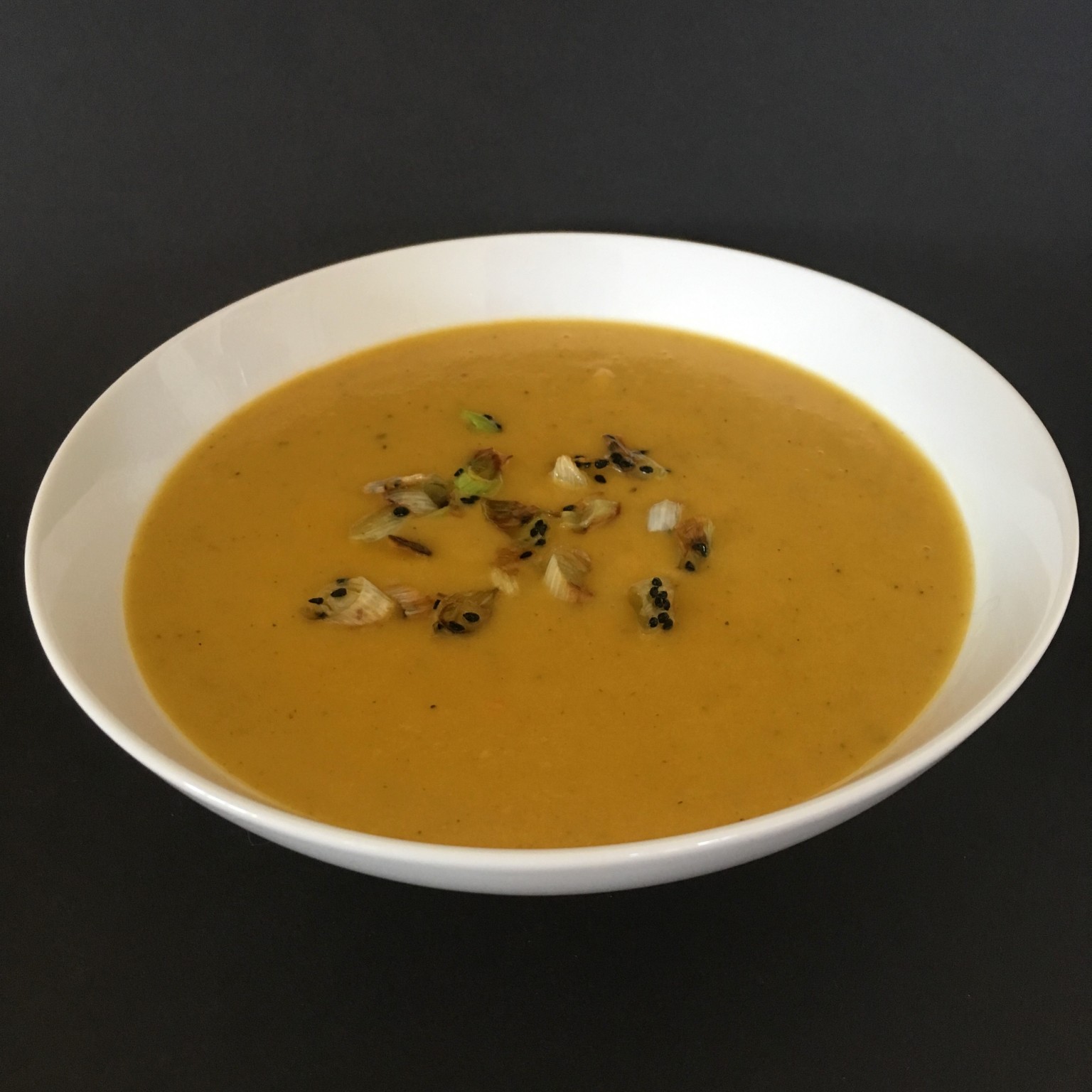
This Week's Mother Nature's Magic... Propagating Pothos Plants (part 1)
Do you have a pothos plant in your home? Also known as Scindapsus and Devil's Ivy with the Latin name of Epipremnum aureum, it's a popular houseplant because it's so easy to grow. It's also really good at purifying the air in your home - thank you plants, that's so very kind of you to help clean our polluted environments - what would we do without you! (Click HERE to read an old blog post about the 10 best houseplants for keeping your home healthy).
The pothos plant is a trailing vine which, in its natural habitat of tropical jungles, grows to enormous lengths. It will grow really long as a houseplant too so you need to give it space so it can do its stuff. It doesn't cling or twine so it needs something to support it - you could try draping it along a shelf or allowing it to cascade down from the top of a cupboard. As you can see from the photo, mine was getting a little leggy and long portions of the vine didn't have any leaves, so I decided to give it a prune and then make some new plants from the cuttings. It's so easy to do with this plant, it's very satisfying to grow your own and, of course, it's free!
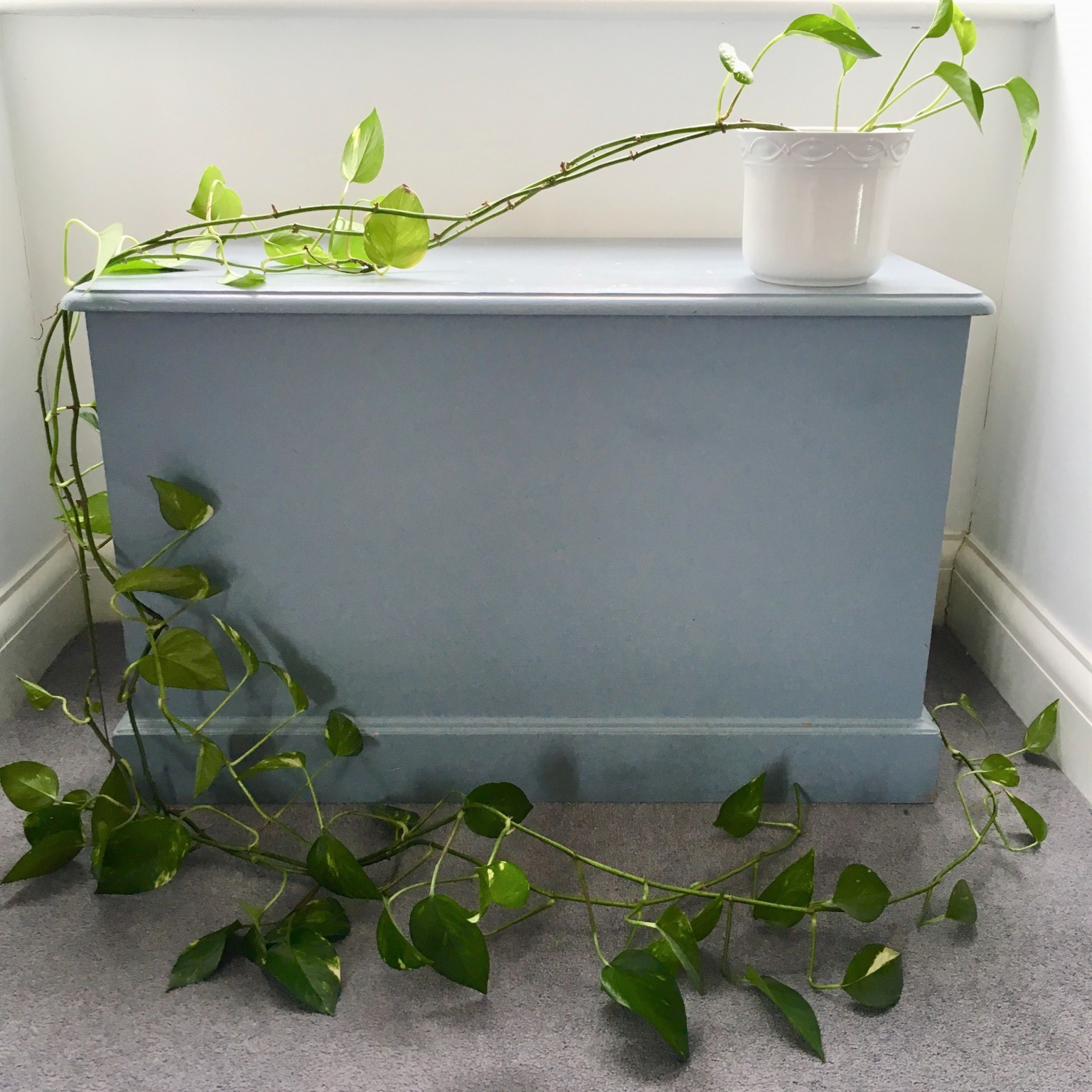
Here's how to make yourself some more plants:
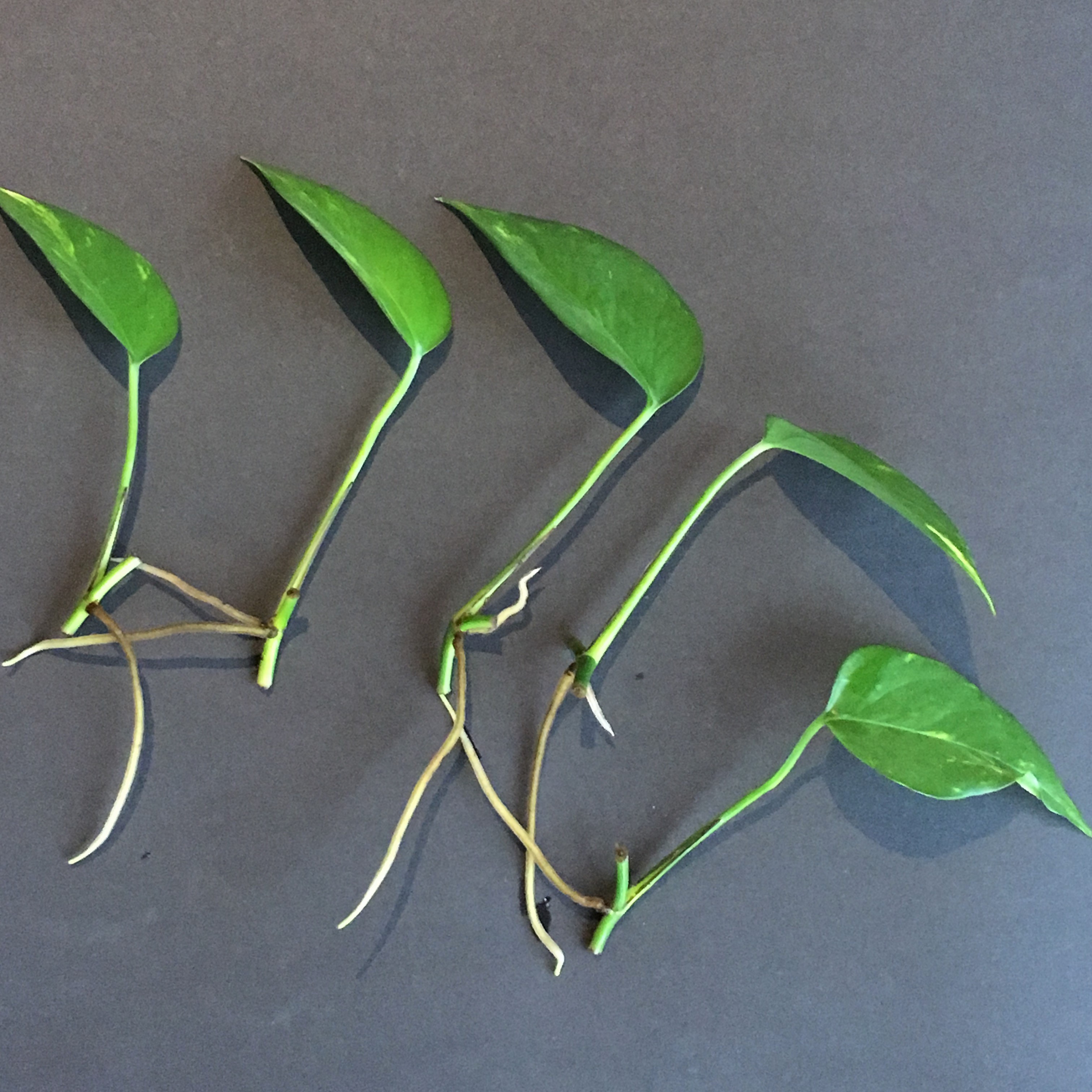 1. Cut a piece of stem from the plant
1. Cut a piece of stem from the plant
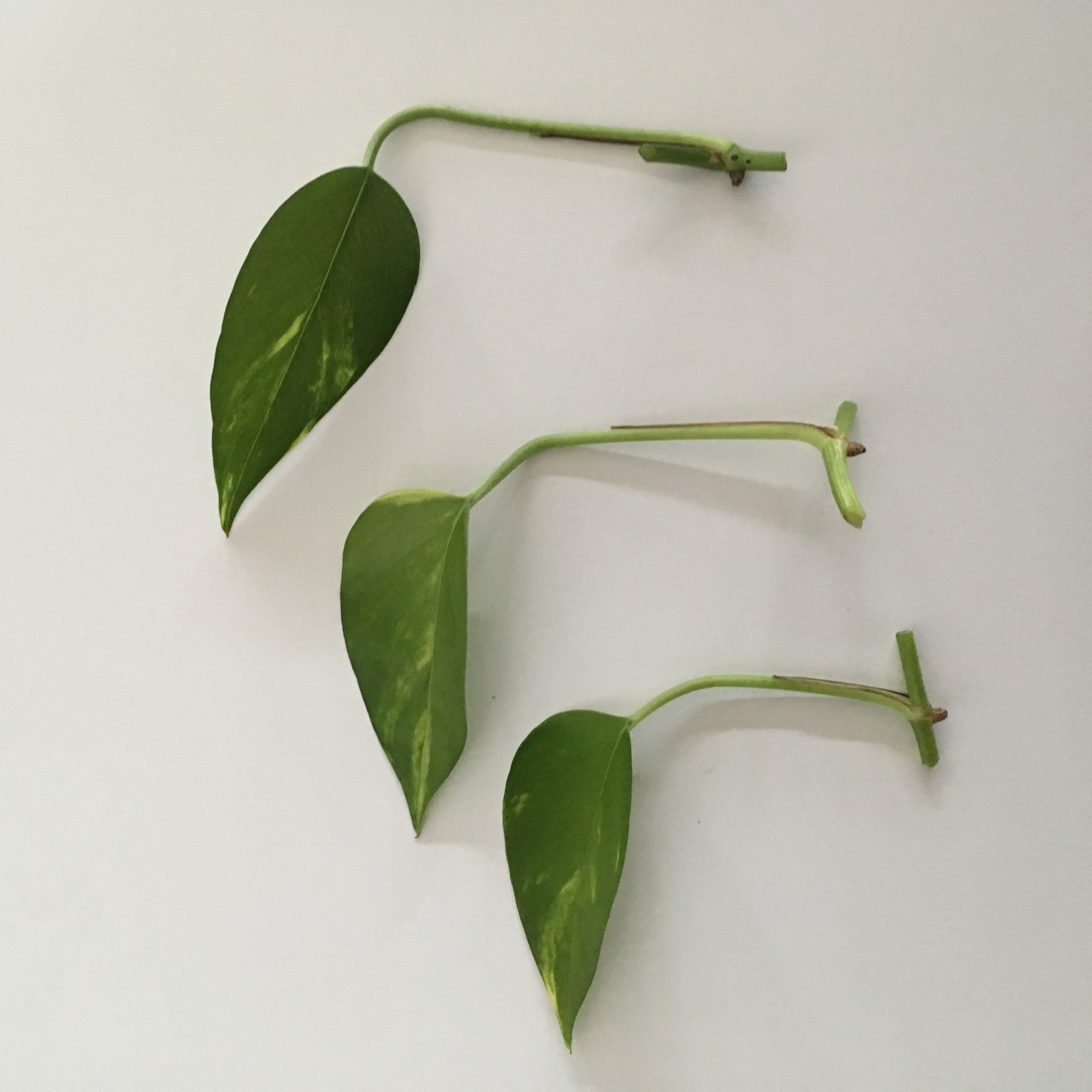 2. At the base of each leaf, where it joins the stem, there's a little nodule known as an 'eye' and this is where the new roots will grow from. Cut the stem either side of a leaf - this will become your new plant. (You can discard the pieces of stem that don't have any leaves).
2. At the base of each leaf, where it joins the stem, there's a little nodule known as an 'eye' and this is where the new roots will grow from. Cut the stem either side of a leaf - this will become your new plant. (You can discard the pieces of stem that don't have any leaves).
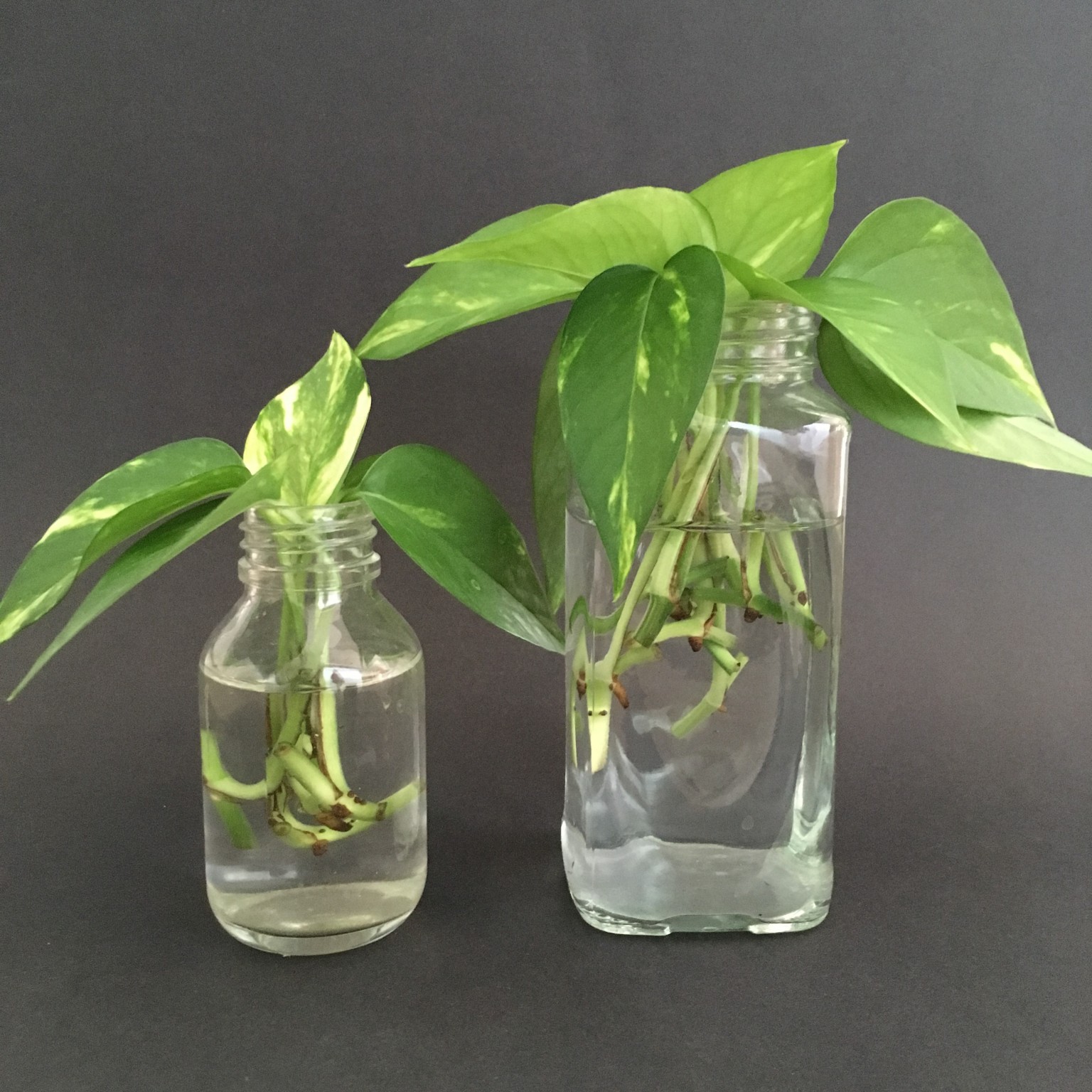 3. Gather up all your little leaves and put them in a jar of water - the stem and eye under the water and the leaves sticking out of the top of the jar. Stand the jar somewhere light (but not in direct sunlight) and warm (they need warmth to grow roots) - a kitchen worktop is good. Change the water every few days. After about 3 weeks your cuttings will have lots of roots and will be ready to pot up. I'll show you how to do that here on the blog when they're ready.
3. Gather up all your little leaves and put them in a jar of water - the stem and eye under the water and the leaves sticking out of the top of the jar. Stand the jar somewhere light (but not in direct sunlight) and warm (they need warmth to grow roots) - a kitchen worktop is good. Change the water every few days. After about 3 weeks your cuttings will have lots of roots and will be ready to pot up. I'll show you how to do that here on the blog when they're ready.
PLEASE NOTE - VERY IMPORTANT: This plant is poisonous to pets so please keep it out of their reach. I know it's highly unlikely that your pet would eat it but best not to take any chances.
If you don't have a pothos plant but would like one, let me know and I can give you some cuttings to nurture and grow on yourself. It's a great way to start exploring the joys of propagation and once you start you'll be hooked and looking for other plants to take cuttings from - it really is one of Mother Nature's best magic tricks!
This Week's Musical Offering...
Lubbock Lullaby by Peter Phippen and David Roll - a beautiful slow and gentle track to rest and relax to.
This Week's Video... 'Doga'
Yep, you've guessed it - a dog that does yoga! Meet Secret, the Australian Shepherd dog who enjoys practising yoga with her owner Mary.
Want to see more of Secret? You can follow her on Instagram HERE.
As always thanks for reading... until next time...






